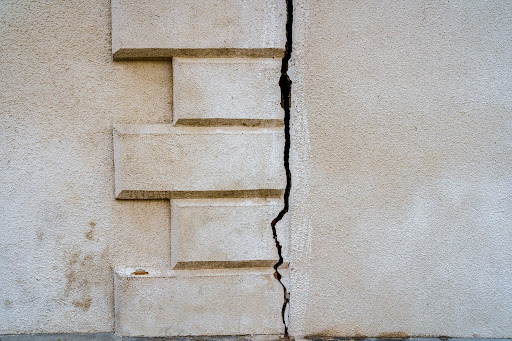Foundation problems are a cause for concern for any homeowner. Sure, there are quick fixes in the short term. But over the long term, you want to address the foundation problems before they go beyond repair.
While a few signs of foundation problems are obvious, others are more subtle. This article will examine these signs. Before we get into that though, here are the main causes of foundation problems in Omaha.
Common Causes of Foundation Problems In Omaha
Omaha has a significant amount of expansive clay soil. Expansive clay soil has a high swelling potential. In other words, the soil expands when wet and contracts when dry. This expansion and contraction can lead to cracks in the foundation and structural shifting.
Apart from the expansive clay soil, foundation problems in Omaha can also be caused by poor drainage, frost heave, hydrostatic pressure, and poor construction.
Frost heave refers to the upward movement of soil in cold winters caused by the increasing presence of ice in the soil. This soil expansion can push the foundation upward and cause it to shift and crack.
Poor drainage and hydrostatic pressure can lead to water pressure on the basement walls, especially during heavy rainfalls. This can cause foundation wall cracks and water seeping through them. Poor drainage can also cause soil erosion around the foundation.
Lastly, poor construction is another cause. Below-par construction, incorrect materials, and shoddy work can cause foundation problems over time.
All these causes can lead to foundation problems for your home.
Common Signs of Foundation Problems in Omaha
Now that we know what causes foundation issues, here are some common signs of foundation problems in Omaha:
Interior and Exterior Wall Cracks
Cracks in walls do not necessarily imply foundation problems. However, they are one of several indicators pointing towards them. Problematic cracks include:
- Cracks in a zig-zag pattern
- Cracks that start as hairline but keep getting wider
- Crack that continue to lengthen and widen
- Cracks that allow water to seep in
- Large cracks on interior or exterior walls
If you see these signs in your interior or exterior wall cracks, you likely have a foundation problem.
Doors and Windows Stick or Don’t Close Properly
Foundation issues cause everything to be out of plumb. When this happens, windows and doors might stick. It might even become difficult to open or close them. For example, the only way to close the door or window might be to slam it shut. You might even notice gaps or cracks around doors and windows.
Of course, this differs from a door or window expanding in summer due to heat and humidity. Only when the gap is constant throughout the year can you attribute it to a foundation problem.
Bowing Foundation Walls
Bowing walls are another sign of foundation and structural issues. Bowing refers to when the walls have a noticeable inward or outward curvature—a lean or a tilt. The walls are bulging or bending and might have a horizontal crack running across them.
Bowing is mainly noticed on foundation walls. If you see your foundation walls bowing, it is a serious concern. Allowing them to remain unrepaired can lead to further structural instability.
Sloping or Uneven Floors
In many foundation issues, the floors start to slope or become uneven. You can notice uneven floors quickly.
One can observe the floor sag, too. Moving furniture becomes difficult. The floors might become bouncy and creaky. There might also be wall and ceiling cracks. In some cases, your home might also smell musty because there’s mold in the crawl space that has caused the wooden support structures to deteriorate.
Uneven floors also pose safety problems. You need to address the issue as soon as you notice it. If left unchecked, the problem will worsen, and you’ll pay for more repairs.
Leaking Basement
With foundation problems, water can seep through cracks in the basement wall. As more water seeps through, the cracks get wider and lengthier. If left unattended, the basement wall might sustain serious damage.
Water infiltration poses its problems, too. Dampness, wet spots, and even standing water can result, which can lead to mold and mildew growth or efflorescence.
Floor and Tile Cracks
Foundation movement can also cause the concrete slab, subfloor, and floor tiles to crack. If you notice an abundance of cracked tiles on your floor, it depicts a possible foundation problem.
Soggy Ground Around the Foundation
Drainage problems can cause the ground around your home to become soggy. This means water or moisture is increasingly accumulating around the foundation. This can cause problems with soil erosion, which can cause the foundation to settle into the ground unevenly. Pay attention if you notice water standing around your house after a rain.
Gaps Between Walls and Ceiling/Floor
If the foundation shifts, you might notice gaps between walls and the floor and between walls and the ceiling. Caulking can work as a temporary fix. But you must address the root issue if you want a lasting repair.
Mold Growth and Crawl Space Issues
Water leakage, dampness, and drainage issues can cause mold and mildew to grow in a crawl space. This doesn’t smell good and can cause the wooden support structures that hold up your home to deteriorate and weaken.
Solutions to Foundation Problems
Foundation problems, if left unchecked, can cause serious damage to a house and can also significantly deplete a person’s bank balance.
The solution can vary from repairing cracks to proper grading, upgrading drainage, using waterproofing methods, reinforcing subfloors, and underpinning. While some tempting DIY “solutions” may provide a temporary fix, you’ll need a professional foundation repair contractor to address the root problem for a lasting solution.
If you think your home needs foundation repair in Omaha, contact us for a free estimate.
















